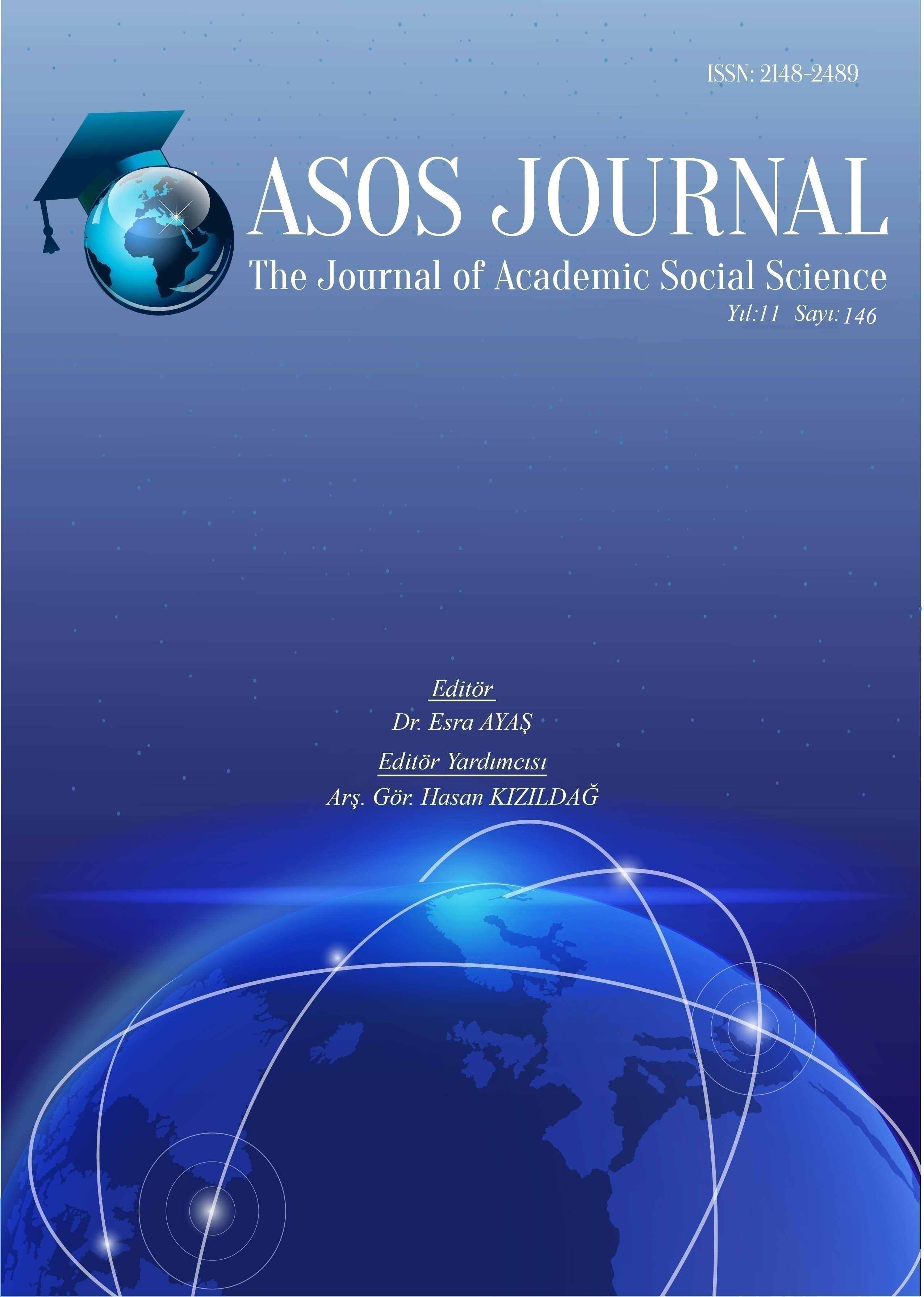Author :
Abstract
Bu araştırmada, fen bilgisi öğretmen adaylarının günlük yaşamda geleneksel bitki kullanımına (etnobotanik) yönelik farkındalıklarının belirlenmesi amaçlanmıştır. Doğadaki olağanüstü bitki çeşitliliği, bitkilerin kullanılması ile yakından ilişkili olan kültürleri ve gelenekleri teşvik etmiş ve bunun sonucunda kapsamlı etnobotanik bir mirasın oluşmasına neden olmuştur. Etnobotanik yerel halkın deneme yanılma yoluyla edindiği, uzun zaman süreci sonucunda kesinleştirdiği ve nesilden nesile aktarılarak günümüze kadar ulaşabilen çok değerli bilgileri içeren disiplinler arası bir alandır. Türkiye’nin yüzyıllar boyunca farklı kültürlerdeki çeşitli medeniyetlere ev sahipliği yaptığı ve zengin bir etnobotanik bilgi hazinesine sahip olduğu görülmektedir. Araştırma 2022-2023 eğitim-öğretim yılı bahar döneminde bir devlet üniversitesinde fen bilgisi öğretmenliği 4. sınıfta öğrenim gören 14 öğretmen adayının gönüllü katılımı ile gerçekleştirilmiştir. Araştırmada olgu bilim deseni kullanılmıştır. Veri toplama aracında günlük hayatta çok kullanılan 10 bitki örneği (kuşkonmaz, üzerlik otu, kapari, sumak, alıç, elma, gül, meşe, ayçiçeği ve safran) ve bu bitkilere ait üç farklı kullanım reçetesi bulunmaktadır. Öğretmen adaylarının kullanım reçetesindeki sorulara verdikleri cevaplar kategorilere ayrılmış ve kodlar belirlenerek çözümlenmiştir. Araştırma sonuçları incelendiğinde, öğretmen adayları tarafından birinci reçetesi en fazla yazılan bitkilerin elma, gül ve ayçiçeği, en az yazılan bitkinin kapari olduğu belirlenmiştir. İkinci reçetesi en fazla yazılan bitkiler gül ve ayçiçeği, en az yazılanlar ise kapari ve sumaktır. Bütün öğretmen adayları tarafından üçüncü reçetesi en az yazılan bitkilerin kapari, üzerlik otu, meşe, sumak ve safran olduğu görülmüştür. İkinci ve üçüncü kullanım reçeteleri yazılmayan bitki kuşkonmaz olmuştur. Bitkilerin üç kullanım reçetesi karşılaştırıldığında, en fazla yazılan bitkinin gül, en az yazılan bitkinin ise kapari olduğu belirlenmiştir. Sonuç olarak, fen bilgisi öğretmen adaylarının geleneksel bitki kullanımına yönelik farkındalık düzeylerinin düşük olduğu bulunmuştur.
Keywords
Abstract
In this study, the aim was to determine the awareness of prospective science teachers regarding traditional plant (ehtnobotanical) usage in daily life. The extraordinary plant diversity in nature has fostered cultures and traditions closely associated with the use of plants, resulting in the formation of an extensive ethnobotanical heritage. Ethnobotany is an interdisciplinary field that contains valuable information that local people acquired through trial and error, finalized over a long period of time, and has been passed down from generation to generation until today. Türkiye has hosted various civilizations from different cultures throughout centuries, and it is evident that it possesses a rich ethnobotanical knowledge reservoir. The research was conducted with the voluntary participation of 14 prospective science teachers studying in the 4th grade of science teaching at a state university in the spring semester of the 2022-2023 academic year. A phenomenological design was used in the research. In the data collection tool, there are 10 plant samples that are widely used in daily life (asparagus, haregrass, caper, sumac, hawthorn, apple, rose, oak, sunflower and saffron) and three different recipes for these plants. The answers given by the prospective teachers to the questions in the usage prescription were divided into categories and analyzed by determining the codes. According to the findings, the plants for which the first prescription was written the most by the prospective teachers were apple, rose and sunflower, and the plant with the least written prescription was caper. The plants whose second prescription is written the most are rose and sunflower, and the least written ones are capers and sumac. It was observed that the plants whose third prescription was written the least by all prospective teachers were capers, haregrass oak, sumac and saffron. The plant for which second and third use prescriptions were not written was asparagus. When the three prescriptions for the use of plants are compared, it is determined that the plant that is written the most is rose, and the plant that is written least is caper. As a result, it was found that prospective science teachers awareness levels regarding traditional plant use were low.





